There’s something magical about being close to the water. Lakes do more than provide us with fresh water; they are natural wonders that create some of the world’s most spectacular landscapes and travel destinations.
At Remitly, we believe in helping you explore across borders. The beautiful lakes on this list invite you to explore the stunning diversity of our planet and the majesty of nature. Let’s take a look at some of the most spectacular lakes in the world that you simply have to see.
Lakes that mirror mountain majesty
There’s something so atmospheric about a crystal-clear lake surrounded by mountains. With still water reflecting the peaks around it, it’s like looking at two mirrored worlds. If you’re looking for serenity and the feeling of being far away from everyday cares, these mountain lakes are exactly what you need.
Lake Louise, Canada
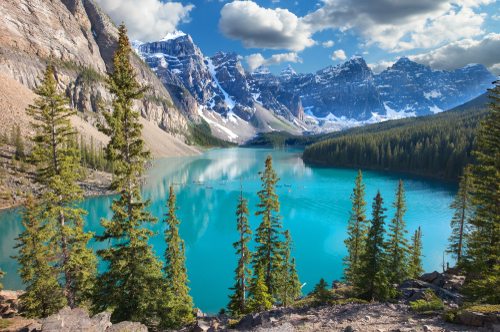
Canada has 20% of the world’s freshwater in its millions of lakes, making it a prime destination for lake-lovers. At the top of the list is the stunning Lake Louise in Canada’s Rocky Mountains.
With clear, cold water surrounded by rocky peaks, this lake would be beautiful no matter what. But what really makes it famous is the almost unreal turquoise color of the water. It’s caused by rock flour, sediment which is ground from the surrounding mountains by the action of glaciers and washed into the lake, giving it an almost ethereal glow. No Instagram filters needed here.
The fairytale castle of the Lake Louise luxury hotel completes this unforgettable scene. Easily reached from the nearby town of Banff, Lake Louise is a perfect place for hiking and canoeing in the summer. In the winter, it freezes over and becomes the most beautiful outdoor ice skating rink imaginable.
Tips:
- The parking lot fills up fast in summer. Get here early or take the shuttle bus from Banff.
- Visit the Lake Agnes Tea House for refreshments and incredible views.
Lake Bled, Slovenia
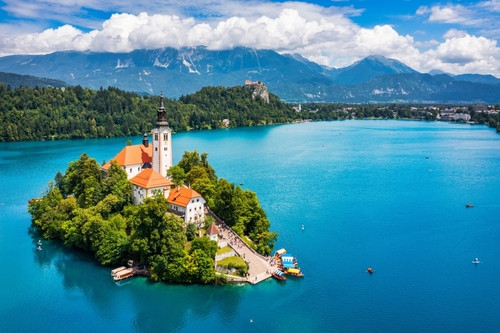
Speaking of fairytales, Slovenia’s Lake Bled will make you feel like you’ve walked into the pages of a storybook. Surrounded by mountains, this large lake has a medieval castle perched on the cliffs above it, and an island church rising from the still water.
A local legend says that a young widow almost drowned bringing the church bell to the island in memory of her husband. However, she was saved at the last minute, and the bell she risked her life for now hangs in the church.
You can take a traditional boat across the lake, climb the 99 stone steps to the church, and ring the Bled Bell to ensure you have good luck. But really, as you stand in front of the church looking out over this gorgeous lake, it’s impossible to deny that you’re already pretty lucky.
Travel tips:
- Take the 3.7-mile path around the lakeshore and enjoy the views.
- Don’t miss the famous Bled cream cake (kremšnita) at local cafes.
Crater Lake, Oregon
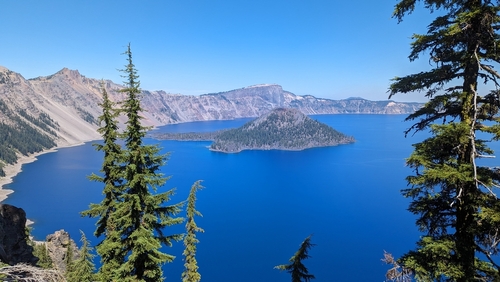
The deepest lake in the USA is also one of its most beautiful. The lake sits in the crater of a collapsed volcano, at an elevation of over 6,000 feet. No rivers flow into this lake; it’s filled only by rain and snowfall and emptied by evaporation. That means it has some of the clearest and most intensely blue water anywhere in the world.
Tips for visitors:
- Drive the Rim Drive in summer for amazing viewpoints.
- You can camp and enjoy the stars in this Dark Sky preserve, but the elevation means nights can be cold even in summer.
Lake Annecy, France
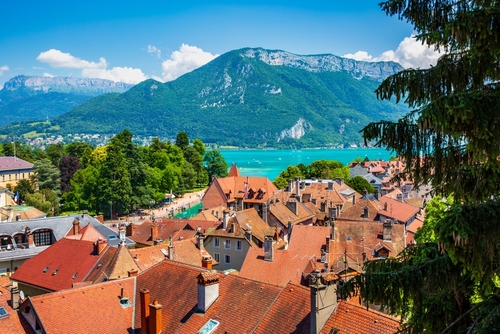
Often called Europe’s cleanest lake, this lake is made even more beautiful by the charming medieval town on its shore. Surrounded by the mountains of the Alps close to the Swiss border, Lake Annecy has startlingly clear water and is a great place to swim in summer.
Good to know:
- The lake is accessible by train from Geneva in one hour or Paris in four hours.
- A 26-mile bike path goes around the whole lake and offers amazing views.
Tropical paradise lakes
It’s not just about the mountains—some of the most beautiful lakes in the world are located in tropical places. Check out these natural wonders for some scenic destinations that don’t require you to wrap up warm.
Lake Toba, Indonesia
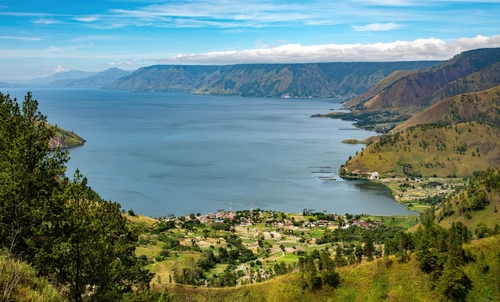
This is the largest volcanic lake in the world, located on the island of North Sumatra. Much of the lake’s surface is taken up by its own island, Samosir, and this island-on-an-island is a great place to explore traditional Batak villages, bathe in hot springs, and enjoy incredible views.
In this unique tropical ecosystem, sustainable tourism is hugely important to protect one of Indonesia’s top travel destinations.
Travel ideas:
- Hire a motorbike to explore villages at your own pace.
- Support local homestays to encourage sustainable tourism.
Lake Atitlán, Guatemala
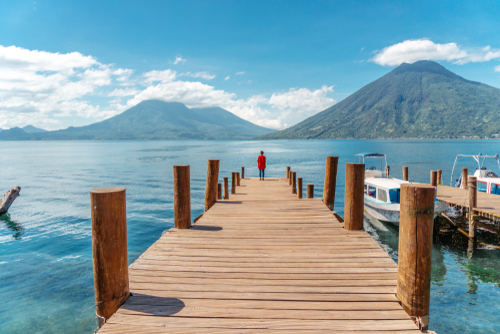
Often recognized as one of the world’s most beautiful lakes, Atitlán is as well known for its villages as for its scenery. These villages are a great place to explore indigenous Mayan culture, with each lakeside village having its own identity.
San Juan, for instance, is known for its weaving, while Santiago is famous for its rituals, and Panajachel for lively markets. It’s a great place to support local businesses and help them preserve local traditions.
Top tips:
- Learning even a few words of local languages like Kaqchikel or Tz’utujil can help you connect.
- Shop at Indigenous cooperatives for textiles, art, and coffee.
Cenotes of the Yucatán Peninsula, Mexico
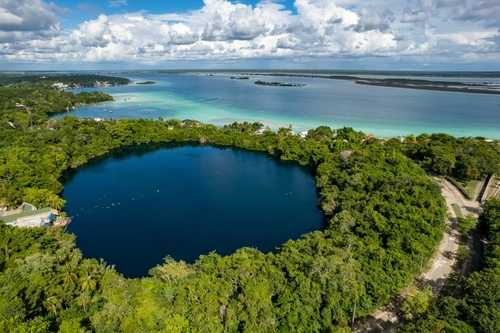
How did one of the great civilizations of the ancient world, the Maya, build incredible cities like Chichen Itza and Tulum in a place with almost no rivers? The answer is cenotes, the underground lakes and rivers that were sacred to this culture. These natural caverns offer incredible snorkeling and diving experiences, and also help you learn more about the customs and history of the Maya.
Travel respectfully:
- Use biodegradable sunscreen when swimming in a cenote.
- Respect the cultural significance of these water sources and don’t swim where it’s not allowed.
Ancient lakes with timeless beauty
Explore history and geology with these ancient lakes around the world.
Lake Baikal, Russia
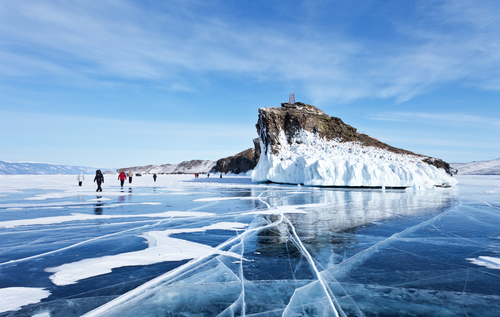
Russia’s Lake Baikal is the world’s oldest and deepest freshwater lake, and it holds 20% of the planet’s unfrozen freshwater. It was formed 20 to 25 million years ago and is home to unique species, including the Baikal seal, which is found nowhere else on earth.
Top tips:
- Local specialties include omul fish, unique to this lake.
- The frozen ice formations make a visit here in the winter worth considering, but wrap up warm.
The Dead Sea, Jordan/Israel
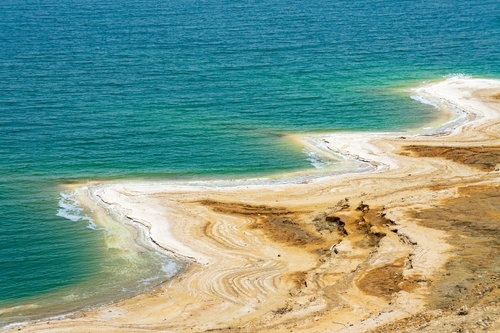
Famous around the world for its extreme saltiness, the Dead Sea is in fact a lake, not a sea. Located 1,300 feet below sea level, it’s the lowest point on the Earth’s surface, and the salinity of the water lets you float effortlessly on the surface.
Travel tips:
- It’s advised to limit floating sessions to 15 to 20 minutes to prevent skin irritation.
- Nearby resorts offer Dead Sea mud treatments believed to have therapeutic effects.
Lake Tanganyika, Africa
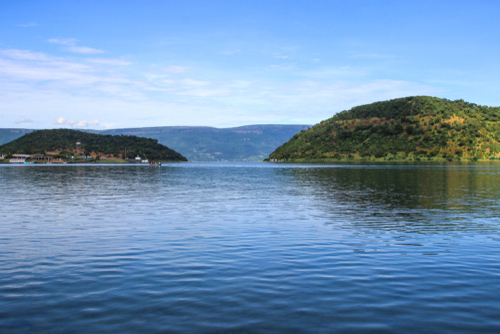
Lake Tanganyika is spread across four different countries: Tanzania, Burundi, Zambia, and the Democratic Republic of the Congo. It’s the second deepest and second-largest freshwater lake by volume.
This massive lake is home to over 350 species of fish, along with other animals, including Nile crocodiles. The lake’s most famous resident is an approximately 70-year-old Nile crocodile rumored to have killed and eaten as many as 300 people.
Interesting facts:
- The lake is easiest to access from Kigoma in Tanzania or Bujumbura in Burundi.
- The MV Liemba Lake ferry is one of the oldest operating passenger ships in the world.
Hidden gems off the beaten path
For intrepid travelers looking to avoid the crowds, these lesser-known lake destinations are well worth the trip.
Lake Sørvágsvatn
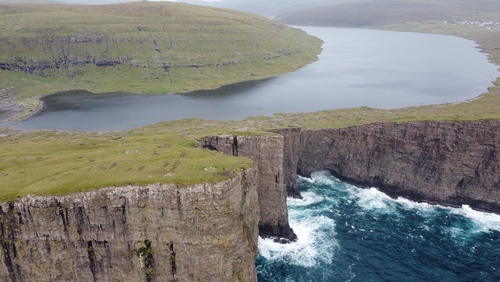
The Faroe Islands lie between Iceland and Norway, but are part of Denmark. This remote and isolated place is home to the stunning Lake Sørvágsvatn. This beautiful lake is famous for an optical illusion that makes it look like it’s floating high above the sea on top of the cliff, when in fact, it’s almost at sea level.
Pro tips:
- The best viewpoint is at Trælanípa cliffs, which you can reach with a two-hour round-trip hike.
- The weather is unpredictable, so bring layers and waterproof clothing.
Peyto Lake, Canada
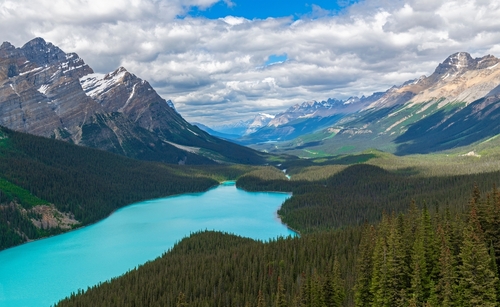
Although it’s not far from Lake Louise, this lake is far less crowded, even in the summer. A viewpoint on the cliffs above the lake, easily reached by car, shows the wolf’s head shape and bright turquoise color that the lake is known for.
Good to know:
- The lake is brightest and most colorful from July to August.
- The parking lot is quite small, so it’s a good idea to arrive as early as possible.
Lake Matheson/Te Ara Kairaumati, New Zealand
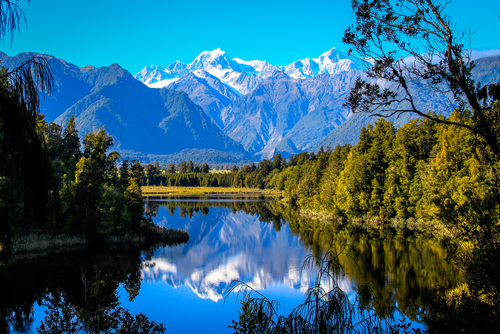
Close to Fox Glacier, this is one of the best lakes to visit in New Zealand for photographers. Its serene waters give an incredible reflection of Mount Cook and Mount Tasman.
Travel ideas:
- Visit at sunrise or sunset for the calmest waters to get that perfect mirror reflection.
- Use a polarizing filter to reduce glare and capture crystal clear images.
Planning your lake adventure
No matter what lake you’re visiting, a little planning can help you make the trip a rewarding experience. Here are some things to consider in order to get the most out of your lake adventure.
When to go
The climate of the lake you plan to visit and the activities you want to do will affect what season is best for you.
In general, spring offers fewer crowds, but temperamental weather. Summer is ideal for water activities like kayaking and swimming. Autumn can be especially stunning at these natural wonders as the leaves change color. And winter allows you to have many lakes almost to yourself and explore the frozen beauty of the season.
Photography tips
Sunrise and sunset mean calmer water at most lakes—perfect for reflections. A polarizing filter will help you cut out glare. Lakes in rural areas often provide ideal astrophotography conditions for capturing pictures of the stars.
What to pack
For mountain lakes, think warm layers, hiking boots, and rain gear. In the tropics, you’re more likely to need insect repellent, sunscreen, and a swimsuit. No matter where you go, a reusable water bottle, good hiking shoes, and a small day pack are always a good idea.
Your next natural wonder awaits
From the mountain majesty of Lake Louise to the rich historical significance of the cenotes of Mexico, the lakes of the world provide us with some amazing travel destinations. But when visiting these places, it’s important to take care of the natural environment and practice responsible tourism to keep them beautiful and pristine for generations to come.
Hopefully, this article has given you some travel inspiration to learn more about the world’s most beautiful lakes. Get out there and start exploring!
FAQ
What’s the best time of year to visit mountain lakes?
In the mountains, winter can be harsh. Heavy snowfall can make some roads inaccessible. However, many mountain lakes are reachable all year round, and sometimes provide unique experiences, such as ice skating on Lake Louise. Summer offers the best temperatures but also brings crowds.
How can I travel responsibly when visiting these natural areas?
Protect natural areas by sticking to marked trails, respecting the wildlife, and taking all your garbage home with you. Remember to follow all instructions and signs, and if it’s permitted to swim in the lake, use biodegradable sunscreen.
Which lakes are most suitable for families with children?
Many lakes make fantastic destinations for family trips. The hiking trails of Lake Louise are family-friendly, and the beaches of Lake Annecy are great places to swim in the summer. Make sure to use plenty of sunscreen, especially when swimming, and only swim in designated areas.